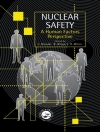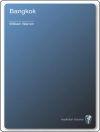Shear waves and closely related interface waves (Rayleigh, Stoneley and Scholte) play an important role in many areas of engineering, geophysics and underwater acoustics. In some cases interest is focused on large-amplitude waves of low frequency such as those associ- ated with earthquakes and nuclear explosions; in other cases low amplitude waves, which have often travelled great distances through the sediment, are of interest. Both low and high frequency shear and interface waves are often used for seafloor probing and sediment characterization. As a result of the wide spectrum of different interests, different disciplines have developed lines of research and a literature particularly suited to their own problems. For example water-column acousticians view the seafloor sediment as the lower boundary of their domain and are interested in shear and interface waves in the near bottom sediments mainly from the standpoint of how they influence absorption and reflection at this boundary. On the other hand, geophysicists seeking deep oil deposits are interested in the maximum penetration into the sediments and the tell-tale characteristics of the seismic waves that have encountered potential oil or gas bearing strata. In another area, geotechnical engineers use shear and interface waves to study soil properties necessary for the design and the siting of seafloor structures.
J.M Hovem & Michael D. Richardson
Shear Waves in Marine Sediments [PDF ebook]
Shear Waves in Marine Sediments [PDF ebook]
قم بشراء هذا الكتاب الإلكتروني واحصل على كتاب آخر مجانًا!
لغة الإنجليزية ● شكل PDF ● ISBN 9789401135689 ● محرر J.M Hovem & Michael D. Richardson ● الناشر Springer Netherlands ● نشرت 2012 ● للتحميل 3 مرات ● دقة EUR ● هوية شخصية 4683786 ● حماية النسخ Adobe DRM
يتطلب قارئ الكتاب الاليكتروني قادرة DRM












